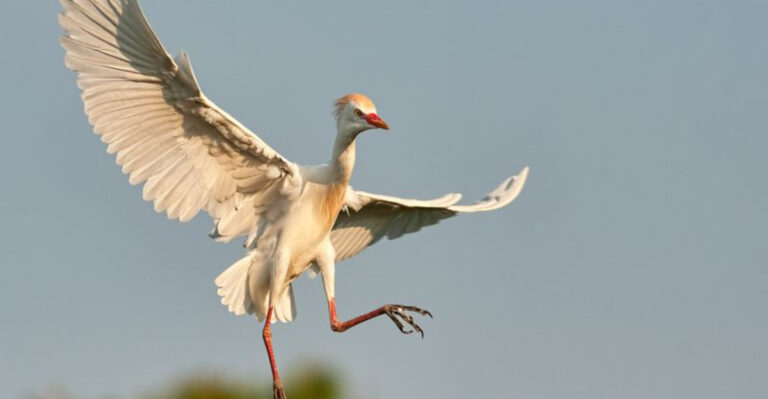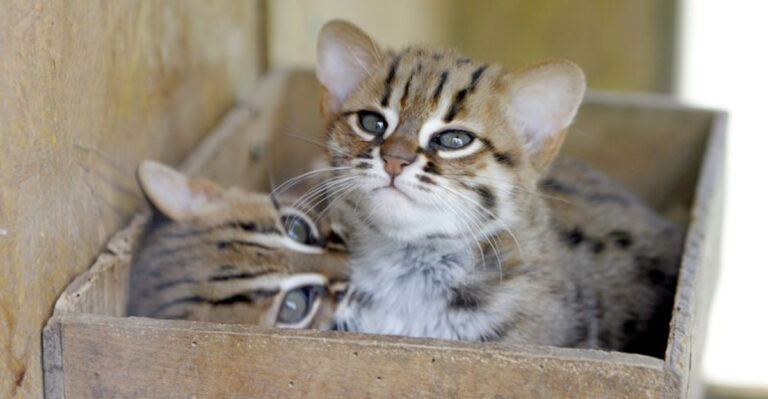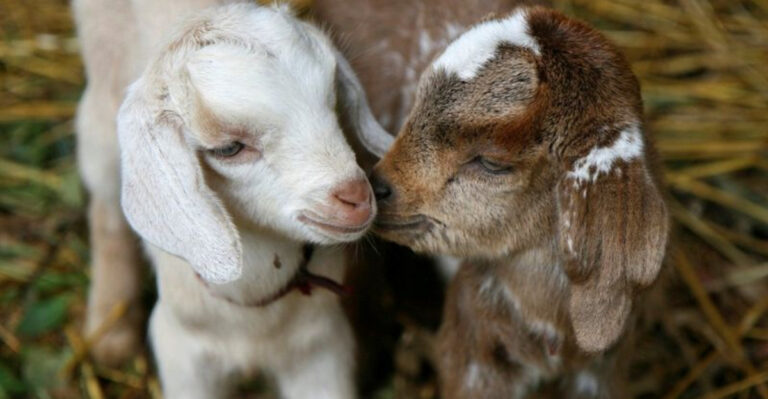13 Expert Tips For Attracting Cardinals To Your Garden
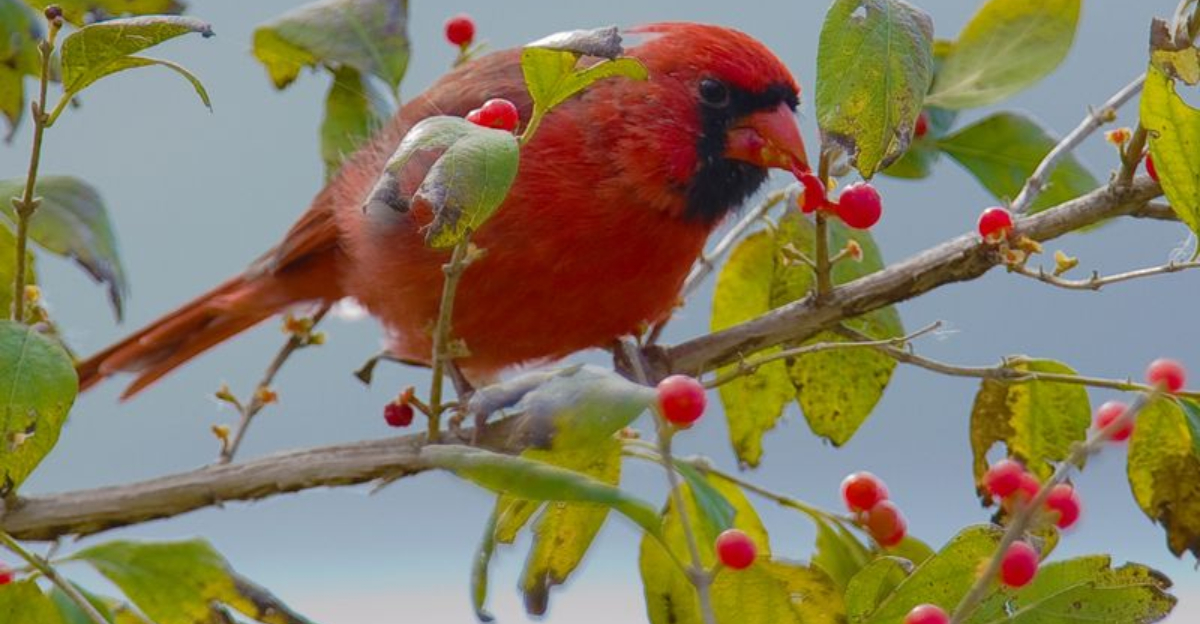
Cardinals are not just striking in color; their sweet songs can bring life to your garden. To attract these vibrant birds, it’s essential to cater to their specific needs.
By understanding their habitat preferences, you can easily turn your yard into a welcoming space. Here are eleven tips to help you create the perfect environment for cardinals.
1. Create A Brush Pile
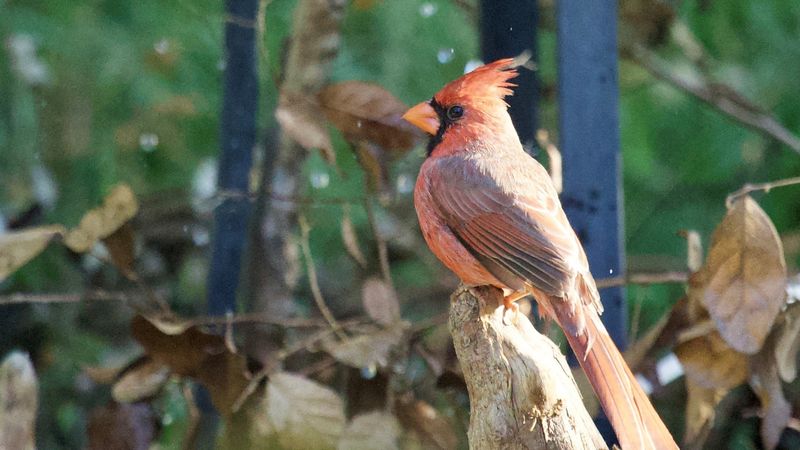
Creating a brush pile is like extending a warm invitation to cardinals. These lovely birds appreciate having a safe space to perch and hide from predators.
By simply gathering twigs, branches, and leaves, you can create an inviting sanctuary for cardinals. This natural shelter is especially comforting during winter months.
In addition to offering protection, a brush pile also attracts insects which cardinals love to snack on. It’s a simple yet effective way to make your yard more cardinal-friendly.
2. Use Cardinal-Friendly Landscaping
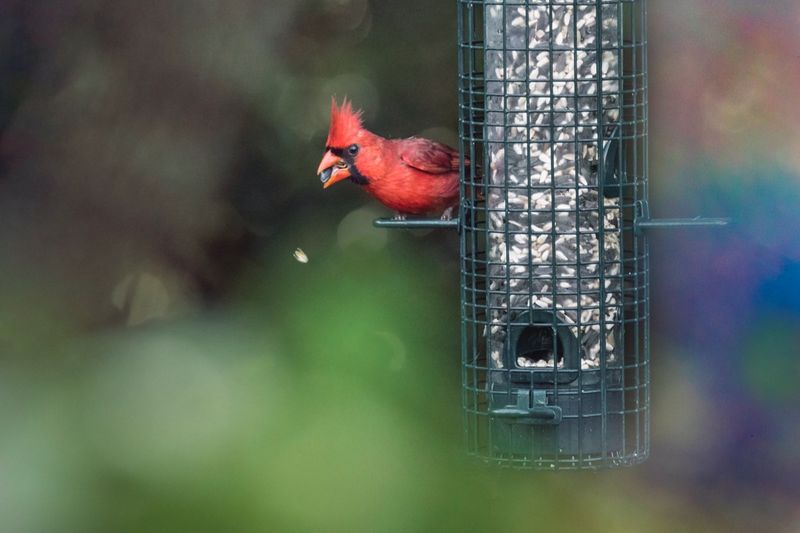
Want to make your garden a welcoming paradise for cardinals? Start by using cardinal-friendly landscaping techniques!
Cardinals love dense, bushy plants where they can hide, perch, and nest.
Native shrubs like dogwood, holly, and viburnum provide both food and shelter, especially in the colder months when berries are abundant.
In addition to providing cover, consider planting trees or vines that offer natural nesting spots.
The more layers of vegetation you add, the more opportunities you create for cardinals to feel at home.
3. Plant Native Trees And Shrubs
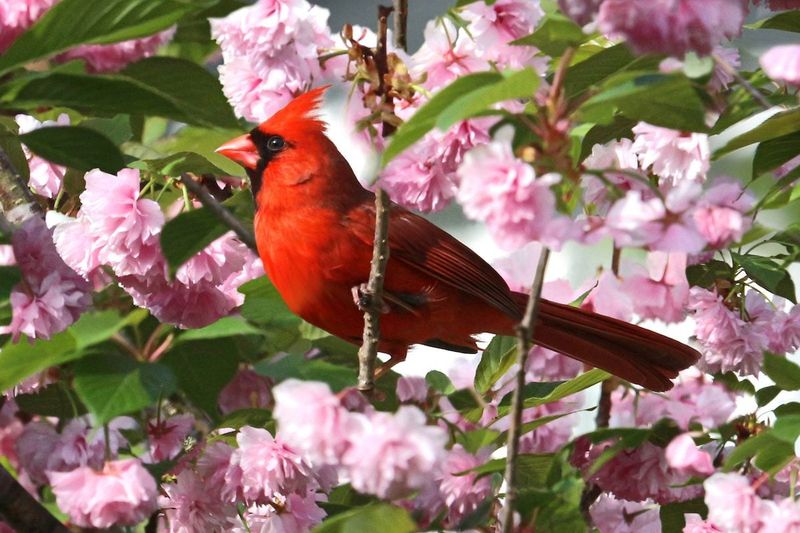
If you’re hoping to attract cardinals, creating a natural habitat is the way to go.
Planting native trees and shrubs like dogwoods, serviceberries, and elderberries offers both shelter and food sources, including fruits and berries the cardinals love.
Design your garden to mimic a natural thicket with different layers for perching and hiding. Dense vegetation also provides excellent nesting spots.
Plus, come spring and summer, the insects thriving in this environment will be a treat for cardinals, creating a healthy ecosystem that attracts and supports them year-round.
4. Provide Suitable Feeders
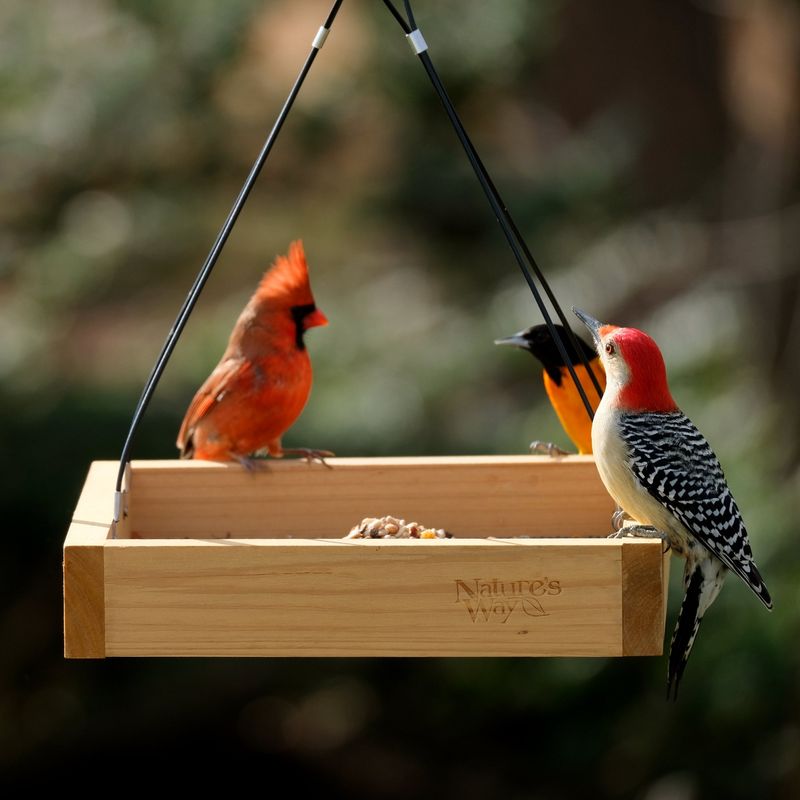
If you want to attract cardinals, a well-placed, sturdy feeder is your best bet.
Opt for a feeder with a broader perch, perfect for their medium size, like tube feeders with large perches or platform feeders.
Fill them with their favorites like sunflower or safflower seeds, and make sure the feeders are located in quiet spots with nearby shrubs or trees for cover.
A clean, well-stocked feeder will keep cardinals coming back for more, so regular maintenance is a must.
Avoid placing feeders in wide-open spaces where predators might lurk, and offer a consistent supply of food to ensure these beautiful birds stick around year-round.
5. Offer Fresh Water Sources
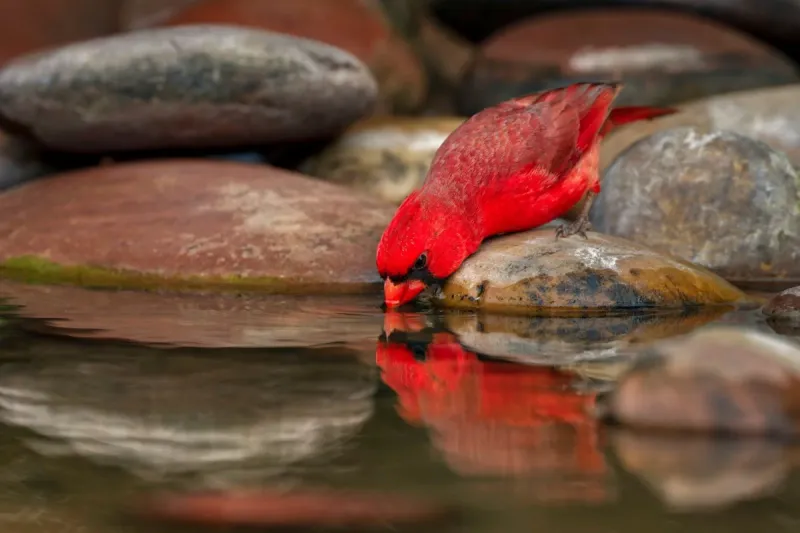
Water is a must-have for attracting cardinals, and a birdbath is an easy way to bring them to your yard.
Choose a birdbath with shallow, gently sloping sides that are perfect for these birds to bathe and drink from.
Add a dripper or small fountain to keep the water moving and capture the birds’ attention.
Place the birdbath in a shaded spot where the water stays cool, and make sure it’s visible from their feeding or nesting areas.
Regular cleaning and refilling keep the water fresh and safe, while a heated birdbath in winter ensures year-round visits.
6. Create Safe Nesting Areas
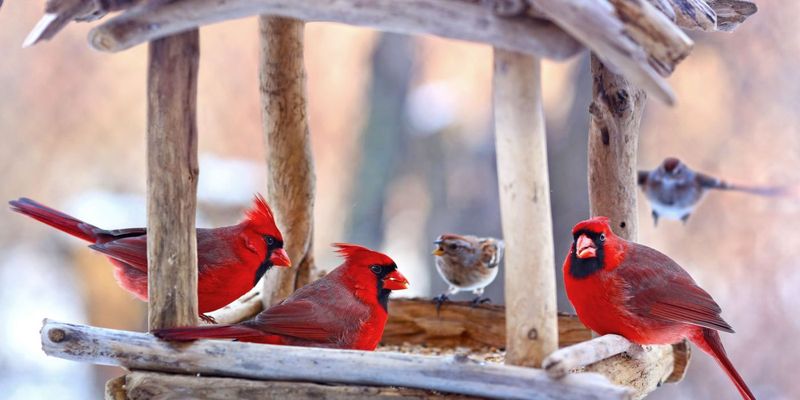
Cardinals are more likely to stick around if they can find a good spot to build their nests.
Dense shrubs and low trees are their favorites, so plant things like honeysuckle, grapevines, and rose bushes for the perfect natural hideaway.
Keep these areas peaceful and avoid disturbing them, as cardinals prefer privacy when nesting.
They typically build nests at eye level or lower, so make sure these spots are sheltered from harsh weather.
If natural nesting options are limited, consider adding a specially designed nesting box to help these beautiful birds settle in.
7. Minimize Pesticide Use
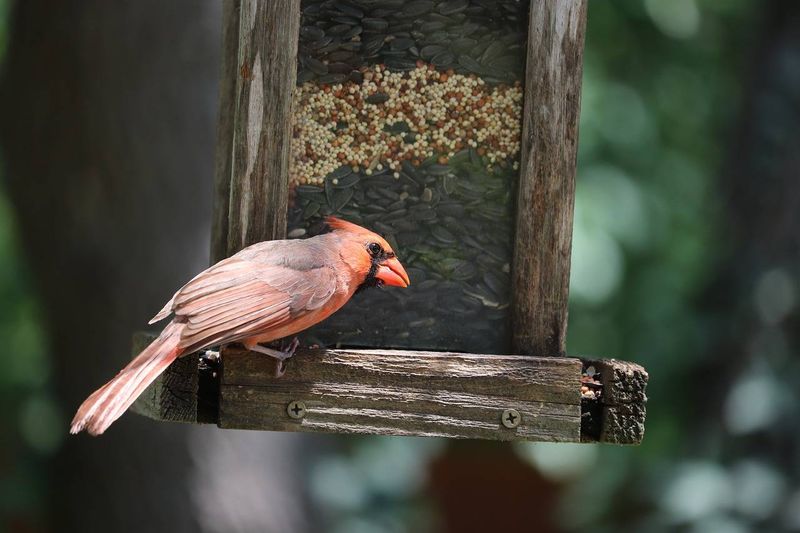
A chemical-free garden is key to attracting cardinals and supporting their health.
Pesticides harm the insect population, which cardinals rely on for food, especially during breeding season.
Switching to organic gardening methods and inviting beneficial insects like ladybugs can keep pests under control.
Natural repellents, such as neem oil, work wonders without harming the environment.
8. Provide Seasonal Food Supplies
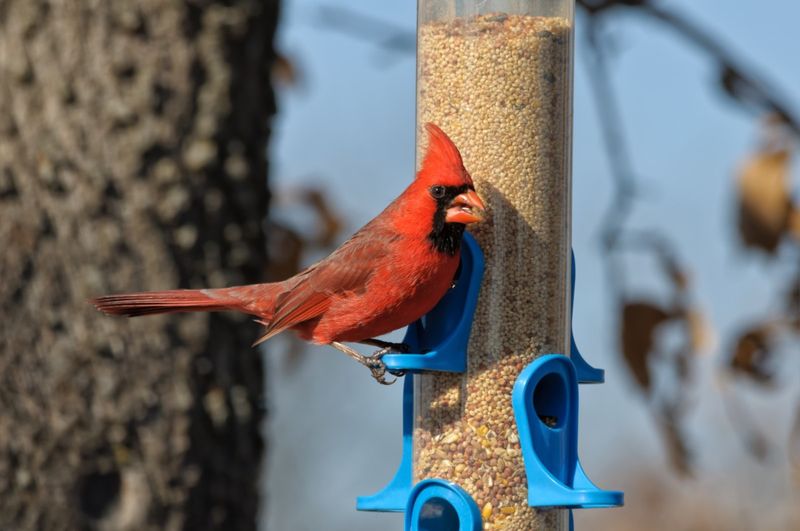
To keep cardinals coming back, make sure their food supply is consistent year-round. In the summer, fresh fruits and seeds work best, while insects naturally add variety to their diet.
During fall and winter, opt for high-energy seeds like sunflower and safflower to help them stay warm.
Offer different types of feeders to accommodate their unique feeding habits.
Regularly refill and clean them to ensure cardinals have a safe, reliable food source, encouraging frequent visits.
9. Plant Berry-Producing Plants
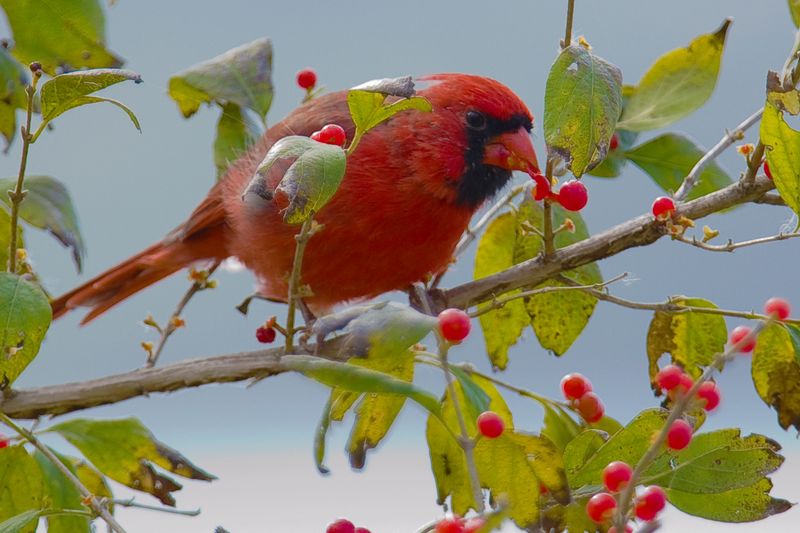
Planting berry-producing plants is a great way to attract cardinals, offering both food and shelter.
Consider adding holly, elderberry, or serviceberry to your garden to provide a steady supply of delicious berries.
These plants also offer dense foliage for cover and potential nesting sites.
Ensure a variety of berry plants to provide food year-round, especially during leaner seasons.
10. Keep Cats Indoors
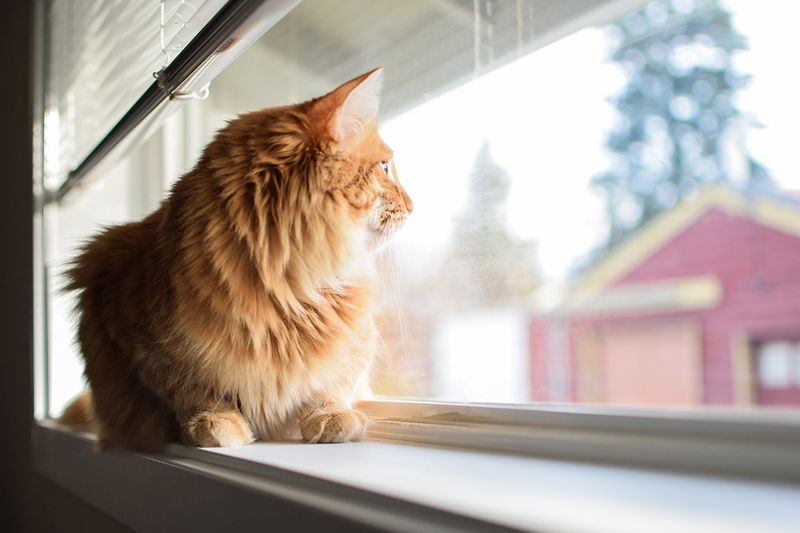
Cats are natural hunters, and their instincts can make them a threat to cardinals and other birds.
Keeping cats indoors gives cardinals a safer environment to feed and nest without the constant fear of being hunted.
During nesting season, this protection is especially important, as young cardinals are particularly vulnerable.
If your cat enjoys outdoor time, a “catio” — a safe outdoor space — allows them to explore while keeping birds safe.
This simple step helps maintain the health and diversity of your garden while ensuring your cat stays safe from outdoor dangers.
11. Create A Cardinal-Friendly Environment
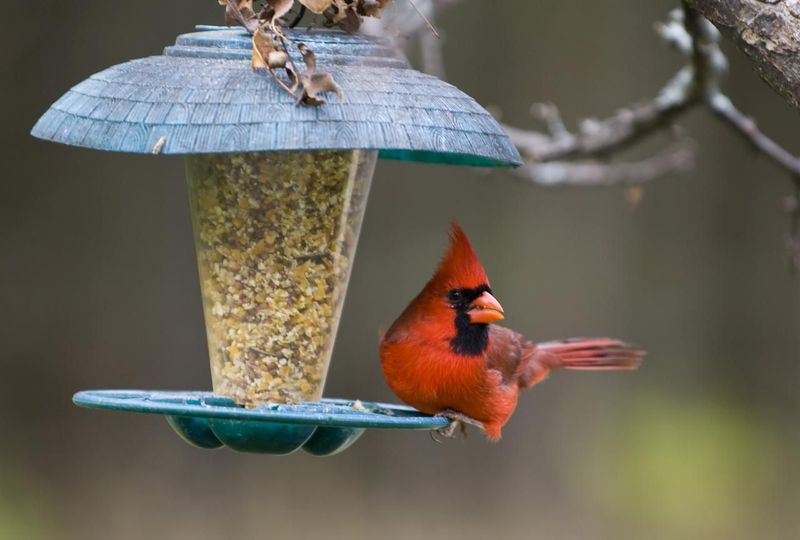
Attracting cardinals requires more than just food and shelter; it’s about creating a peaceful, safe environment for them.
Minimize noise and disturbances that might stress these shy birds. Plant a mix of shrubs, trees, and flowers that provide food and nesting spots.
Balance open areas for foraging with cozy, hidden spaces where they can feel secure. Keep an eye on how the seasons affect the garden and adjust accordingly to meet the cardinals’ needs.
12. Install Birdhouses
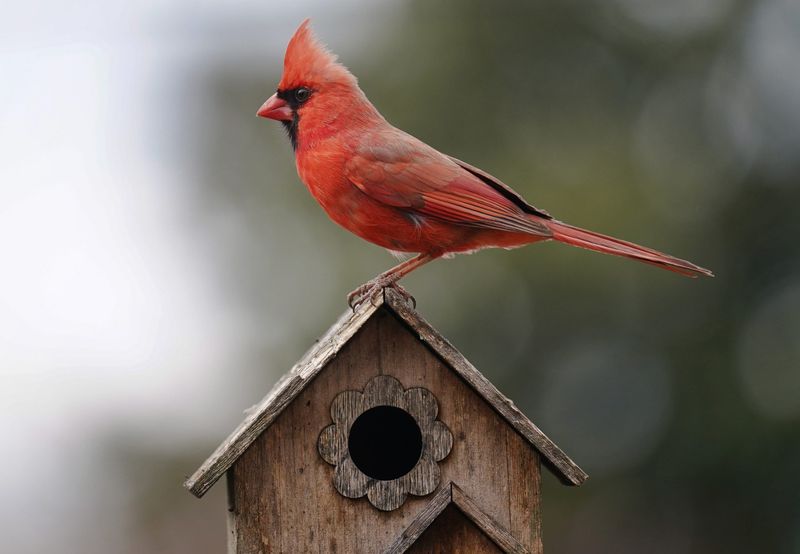
Cardinals aren’t typical cavity nesters, but a well-placed birdhouse can still catch their eye.
Choose birdhouses that mimic natural spaces, with enough room for them to comfortably build their nests. The entrance should be just the right size, offering easy access while keeping predators out.
Place the house high enough to provide safety and a clear view of their surroundings.
Regularly check and clean the birdhouse to keep it inviting and free from disease. Even though cardinals prefer natural nests, a cozy, well-maintained birdhouse can give them a perfect second option!
13. Plant Sunflower Seeds
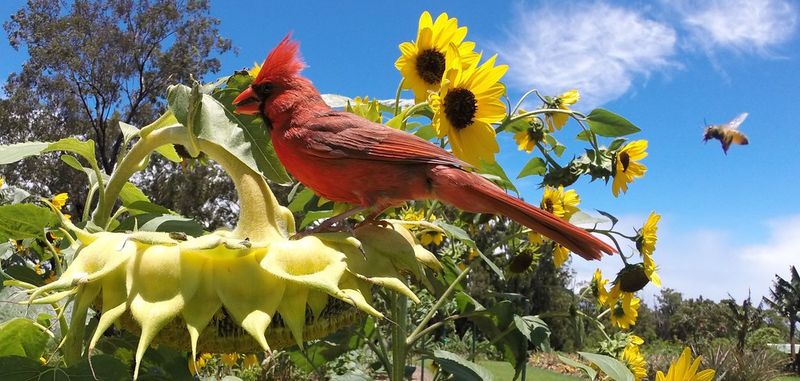
Sunflowers aren’t just beautiful to us; they’re a feast for cardinals too! Planting sunflowers in your garden can provide both a visual treat and a food source for these vibrant birds.
As the sunflowers bloom and seeds develop, you’ll notice cardinals flocking to enjoy this natural bounty. These blooms can serve as a year-round attraction if you plant varieties that stagger their blooming seasons.
Consider setting up a small section of your garden dedicated to sunflowers, ensuring there’s always a fresh supply of seeds for your feathered friends.




